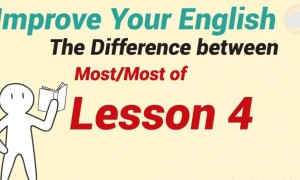They posses another advantage, too. Unlike forests on land, blue-carbon ecosystems do not burn. Climate change is intensifying wildfires around the world. As forests burn, their carbon stocks are released back into the atmosphere. And fires can impede a forest's ability to capture carbon even after they have burned out. In a study published on February 25th in Nature Ecology and Evolution, researchers at the University of Stanford found that repeated fires favour slow-growing tree species. These are better able to survive blazes, but they are also less effective at soaking up cartbon than faster-growing species.
他们还有另一个优势。与陆地上的森林不同,蓝碳生态系统不会燃烧。气候变化正在加剧世界各地的野火。当森林燃烧时,它们的碳储存被释放回大气中。火灾会阻碍森林捕获碳的能力,即便它们已经燃烧殆尽。在2月25日发表在《自然生态与进化》杂志上的一项研究中,斯坦福大学的研究人员发现,火灾的经常爆发对生长缓慢的树种有利。它们在火灾中的存活能力更强,但它们吸收碳的效率也不如生长速度较快的物种。

Submerged forests may be impervious to fires, but they remain vulnerable to other sorts of disasters. In May 2020 cyclone Amphan destroyed 1,200 square kilometres of mangrove forest on the border between Bangladesh and the Indian state of West Bengal. A marine heatwave in Australian waters in 2010 and 2011 damaged around one third of the world's largest seagrass meadow, in Shark Bay. Over the next three years field studies showed that uprooted plants were releasing their carbon back into the atmosphere.
水下森林可能不受洪水的影响,但它们仍易受到其他灾害的影响。2020年5月,气旋“安芬”摧毁了孟加拉国和印度西孟加拉邦边境1200平方公里的红树林。2010年和2011年,澳大利亚水域的海洋热浪破坏了鲨鱼湾世界上最大的海草牧场的三分之一。实地研究表明,接下来的三年里被连根拔起的植物正在向大气中释放碳
Fortunately, an older, man-made ecological disaster suggests that restoring damaged blue-carbon ecosystems is possible. During the Vietnam war, napalm and a cocktail of weaponised herbicides destroyed more than half of the mangroves in the Mekong delta. A report published in 2014 by the International Society for Mangrove Ecosystems showed that an intense post-war replanting programme was able to restore it within two decades.
幸运的是,一场更古早的人为生态灾难表明,受损的蓝碳生态系统的修复是可行的。越南战争期间,凝固汽油弹和武器化除草剂破坏了湄公河三角洲一半以上的红树林。国际红树林生态系统协会2014年发布的一份报告显示,战后大规模的重新种植计划能够在20年内恢复红树林。
And there is more to such ecosystems than simply acting as sponges for greenhouse gasses. They also serve as buffers for vulnerable shorelines, shielding them from storms that barrel in from the high seas. One study of 59 subtropical countries estimated that by dampening waves and providing natural barriers to storm surges, mangrove forests prevent more than $65bn in property damage each year, and help shelter more than 15 million people. Protecting and expanding them, then, appears to be a no-brainer.
这样的生态系统不仅仅能够充当温室气体的海绵。它们还可以增强脆弱的海岸线,保护它们免受来自公海的风暴的侵袭。一项针对59个亚热带国家的研究估计,红树林通过抑制海浪和为风暴潮提供天然屏障,每年可防止超过650亿美元的财产损失并为1500多万人提供了庇护。因此,保护红树林、扩大红树林的面积是无需质疑的举措。







